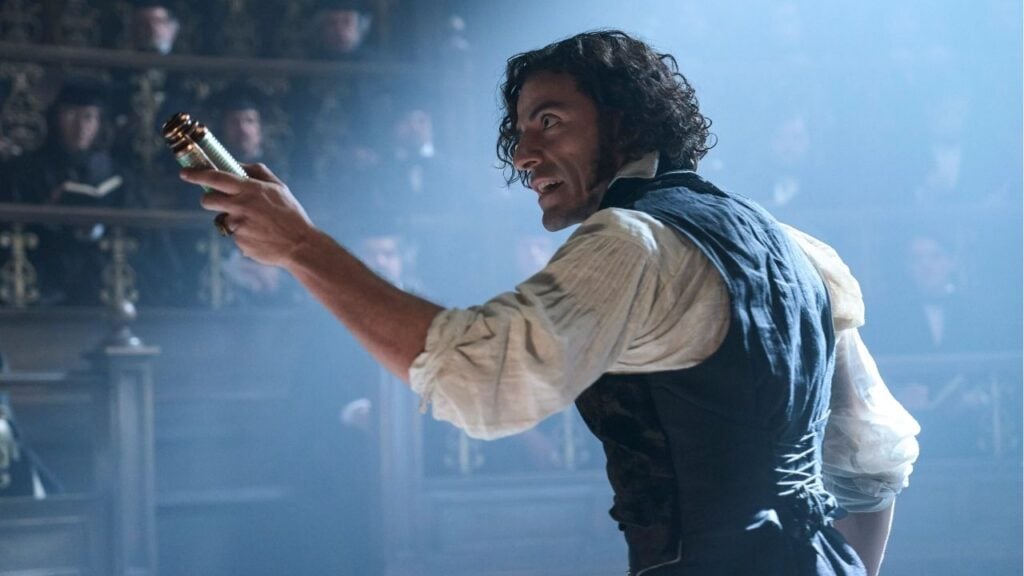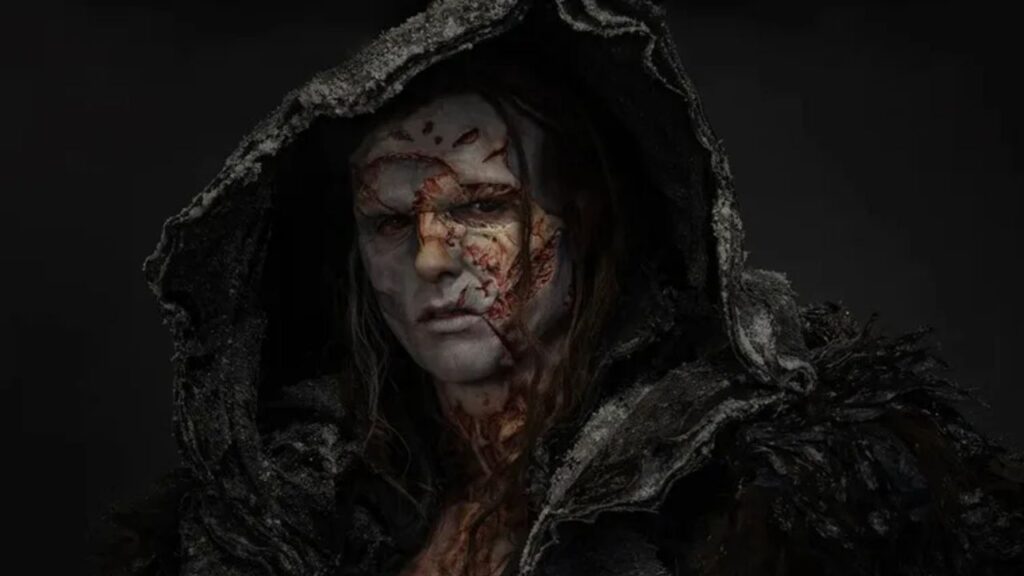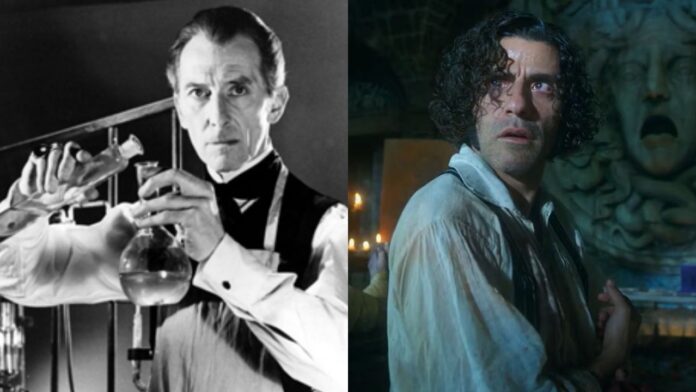Guillermo del Toro’s new ‘Frankenstein‘ starts with a storm, a grave, and a man trying to bring life back from death. But the story that comes next isn’t the same one most of us know.
In this version, Victor’s childhood is darker, Elizabeth’s role is completely different, and the Creature feels more human than ever. So, it’s a common question to have: Is del Toro’s version the same as Mary Shelly’s?
How Much Of Guillermo del Toro’s ‘Frankenstein’ Sticks To Mary Shelley’s Book?

Right from the start, the setting that del Toro’s version gave us was a lot different from that of Mary Shelly. In his version, Victor Frankenstein is driven not only by scientific ambition and curiosity. But the dominant factor here is pain. His father, a cruel physician, abuses him as a child and may even have let his mother die in childbirth for the sake of an experiment. And that’s just the beginning of a whole new version of Frankenstein from that of the book.
Related: The Real ‘Frankenstein’ Mary Shelley Actually Wanted Us To See
Those who’ve already read Shelly’s novel will know how much Victor is fascinated by his own power of creation. But del Toro turns that curiosity into something more personal. In his version, Victor isn’t rebelling against science; he’s trying to heal from the scars left by his father. According to Professor Julie Carlson from the University of California, Santa Barbara, this small twist changes our whole perspective from knowledge and power to knowledge and shame.
Even the famous creation scene feels different because of this change. In the book, Victor runs away in fear the moment his creation opens its eyes. But del Toro makes him stay for a while and tries to raise the Creature like a child. But when the Creature fails to meet his expectations, Victor’s affection turns to anger and rejection. It’s as if a broken man is repeating the same cruelty he suffered as a boy.
The Changes In Elizabeth’s Role

The changes don’t stop with Victor. Del Toro completely reimagines Elizabeth as well. In Shelley’s original novel, she’s gentle, quiet, and blindly in love with Victor. In the film, though, she’s an entirely new person; independent, curious, and brave. In fact, she herself is a scientist, an entomologist who studies insects, and she’s engaged to Victor’s brother William, who grew up here instead of being a child.
In case you missed it: 25 Must-Watch Gothic Horror Movies Of All Time
Even though del Toro has reimagined Elizabeth a bit from the modern world, she isn’t entirely cut out of the mold of Mary Shelly. Carlson pointed out that del Toro based this reinvention on a single line from the novel where Victor describes Elizabeth as “playful as an insect.” And del Toro just built her character from that perspective.
The biggest difference, though, is her connection with the Creature. In Shelley’s novel, Elizabeth and the Creature meet only once, when he kills her. In del Toro’s version, they share several moments together, and those scenes change everything. Instead of fear, Elizabeth is the only one who sees the Creature’s pain and treats him with kindness. And, by the end, she dies protecting him.
The Creature Feels More Human In Del Toro’s Version

The creature in Del Toro’s version of Frankenstein is not the flat-headed, groaning monster from Mary Shelly’s version anymore. In fact, we see him as thoughtful, emotional, and aware. Through him, del Toro flips the whole idea of horror on its head. Instead of asking us to fear him, he asks us to feel for him. According to Carlson, this human touch made the Creature stand out from every other version she’s seen.
Related: 15 Best Frankenstein Films Ever Made, Ranked
In Shelley’s book, people despise the Creature because of his appearance. But in the film, they reject him because they don’t understand him. And that difference changes the whole perspective. It makes his story less about looks and more about loneliness. There’s one part, though, where del Toro stays completely faithful to Shelley: the Creature’s time with the De Lacey family. Many films skip it, but here it’s one of the most powerful sequences.
So, in terms of story, Guillermo del Toro’s Frankenstein isn’t exactly close to Mary Shelly’s version. The plot takes big turns, the characters evolve, and the tone feels softer and more emotional. But the heart of the story doesn’t change. Del Toro never tried to copy Mary Shelly. He just wanted to rethink all the elements: loneliness, guilt, and the search for love, through a modern lens.





